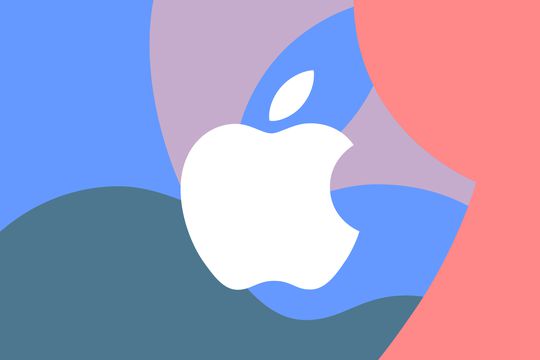Apple Explores Blood Glucose Monitoring Through Software
In a significant stride toward health technology innovation, Apple has reportedly developed and tested an internal app focused on blood glucose monitoring, specifically aimed at individuals who are pre-diabetic. Although the tech giant does not plan to release the app commercially, insiders suggest it may become part of Apple’s evolving health-focused ecosystem. This initiative highlights Apple’s commitment to supporting diabetes management, adding to its ongoing development of non-invasive glucose monitoring hardware — a long-standing objective known in the industry as Apple’s “moonshot” project.
Targeting Pre-Diabetes Management with New App Features
According to reports from Bloomberg’s Mark Gurman, Apple conducted internal trials of the app with employees who were found to be at risk for Type 2 diabetes, confirmed through blood testing. This potential health solution focused on tracking and managing blood glucose levels by closely monitoring dietary intake and lifestyle factors. The subjects were able to use the app to log their blood sugar fluctuations, comparing changes alongside various glucose monitoring devices already on the market.
By correlating specific dietary choices with blood glucose levels, the app could assist users in identifying which foods or lifestyle habits influence their blood sugar most significantly. For instance, an individual who noted that their glucose levels spiked after consuming pasta would receive feedback recommending they avoid it or adjust portion sizes accordingly. This personalized insight into diet and glucose response could empower users to make informed decisions that help mitigate the risk of developing full-blown diabetes.
Health Tracking: How Apple’s Software Innovation Differs From Rivals
Apple’s development of a blood glucose app could mark a strategic enhancement of its health-tracking ecosystem. However, unlike some other health-tracking applications that offer extensive meal and glucose tracking features, Apple’s Health app currently does not include meal tracking capabilities. This functionality is a popular feature among competing services and is something Apple may eventually incorporate to round out its offerings in line with users’ growing demands for comprehensive health management tools.
Although this app prototype may not reach the consumer market immediately, it could lay the foundation for future integration of third-party glucose-tracking applications, expanding Apple’s health offerings. It aligns with the company’s broader goal of creating a holistic health ecosystem within its devices, particularly if this software can eventually integrate with hardware-based solutions for glucose monitoring.
This blood glucose app, while promising, is reportedly separate from Apple’s ambitious non-invasive glucose monitoring hardware project. Apple has been developing this hardware for nearly 15 years, with an aim to provide an accurate, non-invasive way for users to monitor their blood sugar levels without the need for needles or traditional glucose meters. The current hardware prototype, as reported by Bloomberg, is a wearable device roughly the size of an iPhone that uses laser technology to analyze glucose levels by directing light into the skin.
However, the journey to bring this technology to consumers has been fraught with technical and regulatory challenges. Non-invasive glucose monitoring is often described as the “holy grail” of diabetes management, but achieving the level of accuracy required to replace invasive methods has proven difficult. Industry analysts speculate that Apple’s initial consumer-facing product would likely only notify users if they might be pre-diabetic, rather than providing precise glucose readings. Advanced versions that could potentially deliver exact glucose levels could still be years away from market readiness.
Pausing the App Development to Prioritize Other Health Features
Reports indicate that Apple has temporarily paused the development of the blood glucose monitoring app to concentrate on other health-related innovations. This decision may reflect the company’s broader strategy of refining its current health suite, which spans fitness tracking, heart rate monitoring, sleep analysis, and more. Expanding the Health app’s capabilities while developing non-invasive monitoring technology could provide a more integrated and user-centric health experience.
Pausing the glucose app may also allow Apple to explore further regulatory clearances and approvals required for health applications. Any future glucose monitoring solution would need to meet strict regulatory standards, especially if it provides diagnostic or treatment-related insights, as these apps must adhere to regulations that apply to medical devices.
If successful, Apple’s glucose monitoring ambitions could revolutionize diabetes management, offering individuals a less intrusive method to manage their health effectively. For millions managing Type 2 diabetes or at risk of the condition, the convenience of non-invasive glucose monitoring could transform daily routines, enabling more proactive healthcare decisions and reducing dependence on traditional testing methods.
This commitment to health technology could also extend Apple’s influence within the health sector, creating a potential competitive edge against tech giants like Google and Amazon, both of whom are making moves in health data and diagnostics. Moreover, Apple’s approach of integrating health data with user-friendly design may resonate with users, particularly as consumers become increasingly health-conscious and eager for tools that allow for preventative health management.
As Apple continues to make strides in health technology, the reported blood glucose monitoring app suggests that the company is willing to explore multiple paths to address a growing public health need. By integrating both hardware and software capabilities, Apple could provide a more comprehensive health experience than most competitors. Should Apple decide to proceed with this app or integrate similar features into its Health app, the platform would likely appeal to users looking for deeper, more interactive health insights.
While it remains to be seen when, or if, Apple will officially launch a consumer glucose management solution, its efforts are indicative of the company’s long-term vision. Rather than rushing to bring these features to market, Apple’s phased approach highlights a cautious strategy that values regulatory compliance and consumer trust. If this trajectory holds, Apple’s contributions to health management technology could set new standards in digital health care, potentially establishing the tech giant as a key player in preventative health and personalized medicine.


Comments are closed.